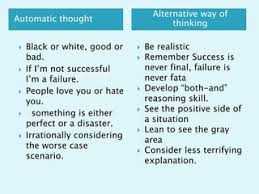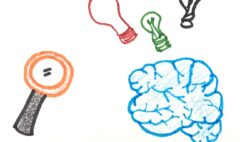Anapana meditation and CBT- automatic thoughts and alternate thoughts
Anapana meditation and CBT- automatic thoughts and alternate thoughts

Introduction: Meditation and Mental Health in Daily Life
In recent years, my meditation practice has become irregular, largely due to recurring health issues. Sometimes it’s a matter of patience; sometimes it’s physically hard to sit. Other days, I simply forget. But one thing is always true: whenever I sit down to meditate, I experience some kind of benefit.
Whether it’s recognizing how distracted my mind is, gaining a new insight, or simply strengthening awareness—meditation always gives something back. Especially when practiced consistently.
Understanding Samadhi: The Foundation of Mindful Awareness
Samadhi, or deep concentration, has been revered in ancient traditions as essential for cultivating a balanced mind. In Buddhist practice, it’s known as Jhana—from the Sanskrit word Dhyana, meaning meditative absorption. The same idea is echoed in Zen practices.
The goal of Samadhi is to quiet the mind, allowing for deeper insight. Once concentration is established, we can observe thoughts, emotions, and sensations objectively. This process leads to what is known in Buddhism as Vipassana, or “right view.”
The Role of Anapana Meditation in Developing Samadhi
One of the simplest and most powerful ways to develop Samadhi is through Anapana meditation—a breath-based technique that builds focus. In this practice, we observe the natural flow of the breath while staying nonjudgmentally aware of any arising thoughts.
This is meditation in action:
-
Thoughts arise? We observe them.
-
The mind wanders? We gently return to the breath.
-
Discomfort or restlessness? We acknowledge it without reacting.
This calm, steady attention is known as nonjudgmental awareness—a key element in both mindfulness and psychological healing.
Recognizing the Mind’s Condition Through Practice
Even when I meditate occasionally, I quickly notice the quality of my thoughts. A wandering mind reflects tension, distraction, or emotional unrest. But as I keep observing without reacting, the mind begins to settle. It naturally returns to a more focused and peaceful state.
This is the magic of Anapana meditation: a simple practice that gradually transforms the mind.
How Cognitive Behavioral Therapy (CBT) Connects to Buddhist Teachings
If you’re familiar with Cognitive Behavioral Therapy (CBT), you’ve likely encountered the terms automatic thoughts and alternative thoughts. These are modern psychological tools for managing mental health—but they share deep roots with ancient mindfulness practices.
-
Automatic thoughts arise instantly, triggered by sensory input or emotional states.
-
Alternative thoughts are more balanced perspectives that emerge from a calm and settled mind.
Let’s explore both in context.
Automatic Thoughts: The Mind’s Reflex Reactions
Our minds constantly respond to the world around us. Whether we’re seeing, hearing, or remembering something, our brain fires off thoughts—often without conscious effort. For example:
-
Seeing a vegetable vendor might trigger: “I need to buy cabbage.”
-
Seeing a difficult neighbor might trigger: “I hate this guy!”
These are automatic thoughts, often born from past experiences, biases, or unresolved emotions. While some are harmless, others can be deeply unwholesome or reactive.
Buddhist psychology explains this as Paticca Samuppāda—the chain of dependent origination. What seems automatic is actually conditioned: a rapid reaction shaped by prior causes. (You can learn more about this in my separate post on dependent origination).
Alternative Thoughts: The Mind’s Capacity for Change
Alternative thoughts arise when the mind is calm and reflective. They show that our thinking isn’t fixed—we can reinterpret situations based on awareness rather than reactivity.
Example:
After returning from a walk and feeling more settled, the earlier thought “I hate that neighbor” might transform into “I was just upset that day.”
This is a balanced, compassionate view, made possible by a mind trained in objectivity.
The Role of Daily Practice in Mental Resilience
The power to shift from automatic to alternative thoughts doesn’t come from external circumstances—it must be cultivated. That’s where Anapana meditation helps.
By anchoring attention in the breath and observing thoughts without getting caught in them, we develop both concentration and clarity. This leads to objectivity—and ultimately, to freedom from reactive cycles.
In Buddhist terms, it’s a shift from self-centeredness toward non-self and equanimity.
Mindfulness, CBT, and the Path to Inner Balance
While CBT offers effective therapeutic tools, its deepest insights align beautifully with ancient mindfulness teachings. But to truly benefit, one must go beyond mechanical application. True transformation requires consistent, conscious practice.
Just like Vipassana meditation, CBT works best when we understand—not just apply—the principles behind it.
Final Thoughts: Meditation as a Bridge Between East and West
If you’re exploring mindfulness, therapy, or both, consider making Anapana meditation a daily anchor. It doesn’t take much—just 10 minutes of quiet, consistent breath observation each day can begin to shift how you see and respond to the world.
Clarity, balance, and insight are already within you. The breath is the bridge.

Archana Bahuguna
Related Posts
Goalkeeping or being focused in the present
Is mindfulness scientific?
How to build emotional intelligence (EQ) at work?
How to build resilience through obstacles?
How can I improve my concentration?
Search
Categories
- Anxiety (1)
- Beliefs (1)
- Breath observation (1)
- Change (1)
- Compassion (1)
- Concentration (6)
- Disease (1)
- Disorder (1)
- Emotions (8)
- Empathy (1)
- Exam anxiety (1)
- Feelings (4)
- Happiness (1)
- Learning (1)
- Limitations (1)
- Logic (1)
- Meditation (5)
- Mental disorders (4)
- Mindfulness (10)
- Narcissism (1)
- OCD (1)
- Pleasing others (1)
- Psychiatry (1)
- Python tools (1)
- Resilience (2)
- School (1)
- Self view (1)
- Social support (1)
- Speed (1)
- Student (2)
- Students (1)
- Teens (1)
- telehealth (1)
- therapy (1)
- Thoughts (6)
- Vipassana (3)
Latest Posts









